How to Dispose of Bleach in 3 Safe Ways
Author: Anne Cowart | Editor: Omar Alonso
Review & Research: Jen Worst & Chris Miller
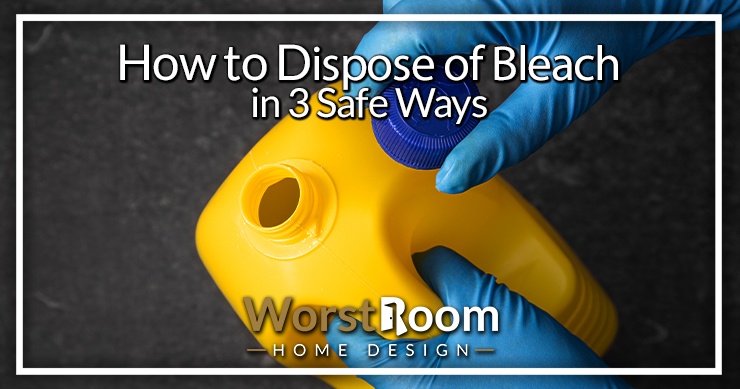
Bleach is great when you need it. The strength of bleach can rip apart stains and grime better than many other cleaning agents. But what happens when you need to get rid of a bottle? Do you know how to dispose of bleach safely?
Sit back and relax. This article covers all you need to know about getting rid of bleach. Consider a few key things, and you can likely check off this task easier than you think. Let’s see how.
How to Dispose of Bleach
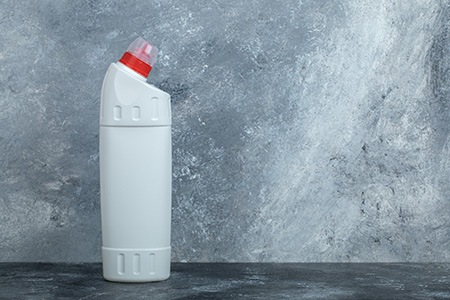
There are many answers for how to get rid of bleach safely. Some you may have already considered but aren’t sure if you are permitted to do. Others you might not have thought of yet. No matter what, we’ll be able to answer this question once and for all.
The three best ways to dispose of bleach are:
- Use it or give it to someone who will
- Take to a hazardous waste facility
- Flush diluted bleach down the drain
But there’s more to the story than these quick points. Let’s go over each option in a bit more detail so you can figure out the best way for you to answer how to dispose of bleach.
Use It or Give It to Someone Who Will
The best way to get rid of a bottle of bleach is to put it to use. If you aren’t in a rush to get rid of it, maybe put it to the side for the time being. Bleach can last for about a year before expiring, giving you plenty of time to think it over.
If you know you won’t use it or have to get rid of it immediately for another reason, you can check to see if any of your friends, family, coworkers, or nearby facilities could use it. You can help yourself by helping others.
You can take this another step by posting on an online platform such as Nextdoor or Facebook Marketplace. Offer a bottle of bleach up to the highest bidder, likely free, and if you’re not too far out of the way, it’ll probably be gone before you know it.
If the bleach is expired, you don’t want to give it away. The problem with expired bleach is that you can’t know how well it will do its job. The sodium hypochlorite begins to break down in as little as six months.
Take to a Hazardous Waste Facility
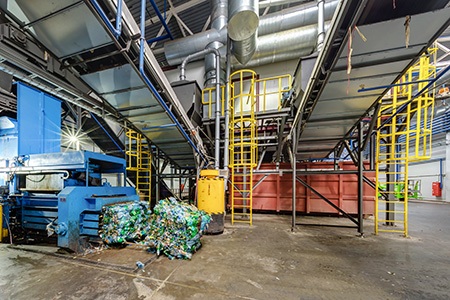
If the first bleach disposal step didn’t work out, the next best way to get rid of bleach is to take it to a hazardous waste facility. Some municipalities offer these facilities for public use, generally with other recycling or disposal services.
Other times, cities or counties will host hazardous waste events. You can set aside your bleach, paint cans, automotive fluids, and other dangerous waste. Then bring them to these events for disposal.
Taking this route ensures that your bleach gets the treatment it deserves. It protects your sewage system and the environment. It's the best of both worlds.
Flush Diluted Bleach Down the Drain
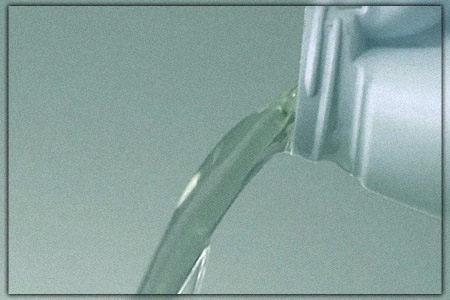
The last option for disposing of bleach is to pour it down the drain. But you have to be careful. It’s ideal to heavily dilute the bleach with water when dumping it down any drain. You don’t want to pour it down in high concentrations, even when doing things like getting rid of drain fly worms.
Another critical consideration is the possibility of the bleach mixing with other chemicals. Bleach can cause severe reactions, resulting in hazardous gasses and other byproducts. You want to avoid using the same drain that any cleaner might be in. You can mix bleach and baking soda safely, though, which gets asked a lot.
To pour bleach down the drain, start by running the water. As the water continues to run, slowly add the contents of your bottle of bleach to the drain.
Once the bottle is empty, keep running the water to ensure the water flushes all of the bleach out of the pipes. Can you dump bleach down the drain? Yes, but dilution and flushing are both critical steps you can't leave out.
When doing this, it’s a good idea to open a window and turn on the fan. If any fumes come up, you want fresh air to rush them out. This step protects you and others in the household.
You can use a sink, toilet, or shower drain to help answer how to dispose of bleach water. As long as you include lots of water, any well-flowing drain can do the trick.
Special Note for Septic Tanks
If your house uses a septic tank instead of a municipal waste system, it's worth exercising more caution. Can you pour diluted bleach down the drain? Yes, but with a septic tank you should dilute it even more and then spread the pours across a period of days.
While the bacteria in septic tanks are resilient, pouring a lot of bleach could tamper with the delicate balance, though normal amounts used in cleaning and washing clothes is fine. Try adding more water or flushing it down over a few days. This approach should dilute the bleach to the point where it won’t cause harm to your septic tank.
Dangers Presented by Bleach
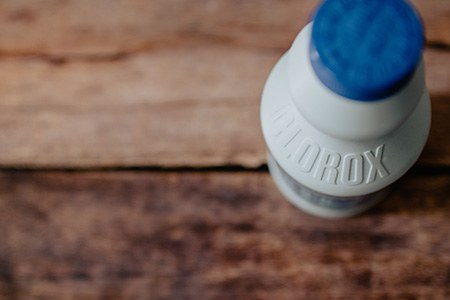
Let's say you just finished cleaning out the tub, toilets, sinks, and even were getting hair dye off your counters. You didn't wear gloves, wiped sweat off your face, rubbed your clothes by accident, and even caught the cat licking at a stray drop of bleach...
Bleach is a product that you need to handle with care. It is dangerous to the health of humans and many animals and can even damage plants. Some areas regulate its use and disposal, so check with your local authorities for more advice.
While most of the time people avoid drinking bleach, accidents can happen. Ingesting bleach can cause significant burns on the esophagus. And if one drinks enough bleach, it can be fatal. There’s no doubting the need to take this product’s safety seriously.
Even without letting it into your mouth, bleach can harm your skin, eyes, and any body parts in contact with bleach. It’s best to use thick rubber gloves and a careful approach when using or disposing of bleach. If it gets on your skin, rinse it off immediately.
If bleach mixes with other ingredients, it can create toxic fumes, including chlorine gas. These gasses can cause burning of the throat and eyes and even cause significant lung injury.
Regular white vinegar and other common liquids can interact dangerously with bleach. It might not come to your mind when using bleach after using another cleaner, but you should never mix bleach unknowingly. The consequences can be severe.
Other Concerns About Bleach Disposal
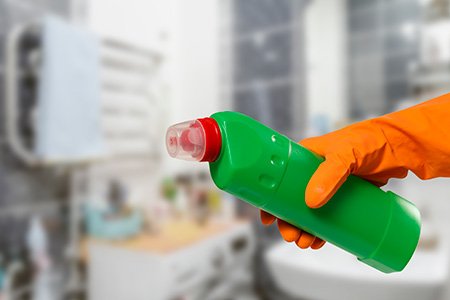
Here are some of the most frequently asked questions about the safe disposal of bleach. You may be wondering how to get rid of bleach fumes after cleaning, too, which you can learn here.
Can I Pour Bleach Outside?
It’s best to avoid pouring bleach outside. In high concentrations, bleach can harm the health of wildlife and plants. If you can’t use it or give it away, pouring it down the drain with lots of running water is a better disposal method. But if the bleach is heavily diluted, you can pour it outside in small quantities and away from living things.
What Do You Do With Expired Bleach?
Bleach doesn’t last forever. The active ingredient in bleach, sodium hypochlorite, degrades rapidly, starting at just six months. Within one year, some manufacturers will determine the bottle is expired. To get rid of expired bleach, take it to a hazardous waste facility or pour it down the drain with copious amounts of water.
Is It Okay to Pour Bleach on the Ground?
The first answer for how to get rid of bleach is not to pour it on the ground. It’s better to use it, give it away, or take it to a hazardous waste facility. You can also pour it down a drain with lots of running water. If the bleach is heavily diluted, you can pour small amounts of it on the ground away from living plants and animals. Expect it to kill any vegetation you pour it on.
What Should I Do With the Empty Bleach Bottle?
Once you have disposed of the bleach, you want to rinse the bottle to ensure it is empty. Then you can follow the recycling rules for your area. Most bleach bottles are made from recyclable plastic, as long as the inside is rinsed clean.
That’s How to Dispose of Bleach Safely
Getting rid of bleach can be a necessity. Whether it’s expired or you have another pressing reason to get rid of a bottle of bleach, you can choose many ways to dispose of it.
Start by trying to use it or giving it to someone who can. You can even try local businesses or other organizations you visit. If that doesn’t work, see if you can take it to a hazardous waste facility.
As a last resort, you can pour bleach down a sink or toilet along with a lot of water. Avoid mixing bleach with other ingredients, as the reaction can create harmful gasses. And continue to let the water flow as you pour the bottle out. The bleach should get heavily diluted before entering the waste system. And that's how to dispose of bleach safely without harming the environment.




